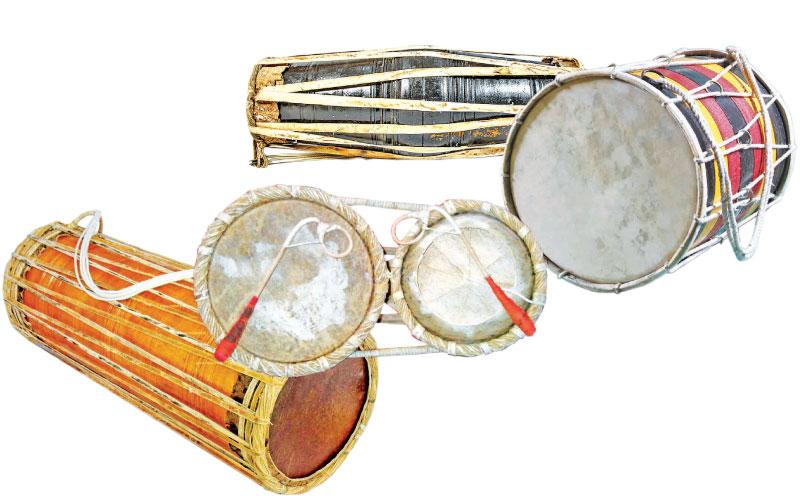
Drums play a very important part in the lifestyle of Sri Lankans. It is used at temple rituals and other religious events as well as at weddings, other celebratory events and even at funerals. The history of Sri Lankan drums dates to more than 2,500 years ago and references to them are found in ancient literary works such as the Thupavamsaya, Dalada Siritha and Pujavaliya. It is said that in the early days that there were 64 types of drums but now there are only about 10 types of drums in use.
Different rhythms or beats are used in different situations.
Hewisi is used in religious events while the Ana or Anda Beraya is used to tell people about Royal decrees. Even today, once in a while an Anda Bera Karaya (man who beats a drum) can be heard though it is now more a gimmick. In the days of the Sinhla kings the Vada Beraya was played when they persons being taken to be beheaded.
The Mala Beraya is used in funeral processions. The Rana Bera are used by armies going to war and the Magul Beraya is used during weddings, ceremonial and festive occasions.
Geta Beraya (Udarata Beraya)
The Geta Beraya or Udarata Beraya is the Kandyan drum. It is the main drum used in traditional Kandyan dances and so, the name Udarata Beraya. The name Geta Beraya (drum with a knot) is given because of the shape of this drum. It has a barrel-like shape and the two sides are narrower than the centre of the drum. Ehela, kos (jak)or kohomba (margosa) or milla wood is used to make it. The two sides are covered with two different kinds of animal hide. The left side is covered with treated cattle hide and the right side with treated goat or monkey skin. The cattle hide covered side has a low pitched sound or beat while the side covered with the goat or monkey skin has a sound or beat higher in pitch. Deer skin strips are usually used to hold the sides of the Geta Beraya. It is tied around the waist of the drummer. The drum is played with both hands.
 Thammattama
Thammattama
The Thammattama has two drums joined together and they are of two different sizes. One drum is larger. Only the top sides of the drums are covered with either cow or buffalo skins. The wood used for the Thammattam is Kos , Kohomba or Milla. The special sticks used to beat the twin drums are made from the Kirindi creeper. The right drum has a louder sound than the left drum which has a looser, deeper sound.
Davula
This large drum is the main drum or percussion instrument used in the traditional Sabaragamuwa rituals and dances. It is also used for Buddhist ceremonies, rituals and peraheras. The Davula is also used as an Ana Beraya by town criers or similar persons to broadcast Royal and other decrees. The Davula’s two faces are covered with cattle or goat hide. It is tightened with a string made especially for this purpose. The drummer beats one side of the Davula with a hand and the other side with a stick called the kadippuwa.
 Yak Beraya (Pahatharata Beraya)
Yak Beraya (Pahatharata Beraya)
This is the low country counterpart of the Kandyan or up country Geta Beraya. As it is used in the southern coastal areas of the country or the Pahatharata areas it is called the Pahatharata Beraya. Other names for it are Yak Beraya, Ruhunu Beraya, Dewul Beraya, Dhik Beraya and Goshaka Beraya. The Yak Beraya is the main drum used for the Pahatharata dances. It is cylindrical in shape and this is why it is called the Dhik Beraya. The name Goshaka Beraya is given to this drum because of its loud, bass sound.
It is made from kitul, coconut, kohomba, ehela or milla wood. The sides are covered with treated cattle hide or stomach lining. The strips of skin holding the Yak Beraya together are made from treated cattle hide. Like the Geta Beraya this drum is also tied around the waist and played by hand.
